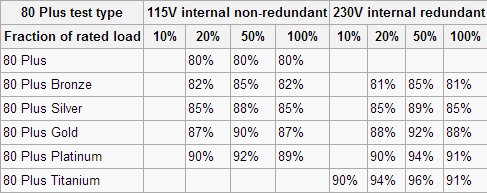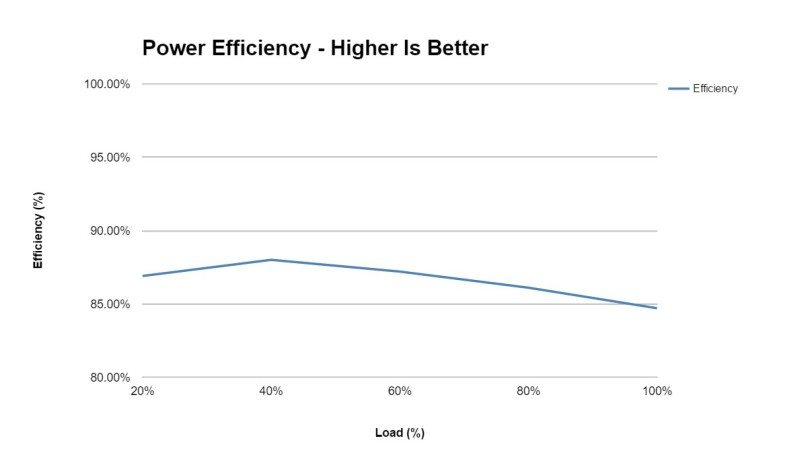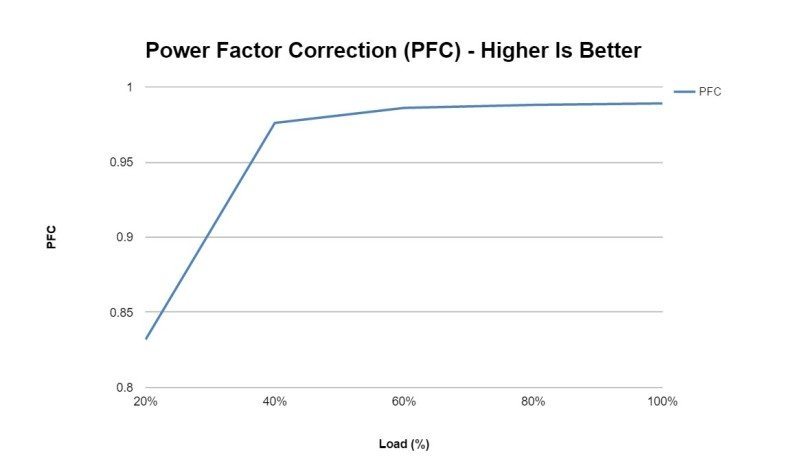Enermax MAXPRO 500w Power Supply Review
Peter Donnell / 9 years ago
Efficiency, PFC and Voltage Regulation
Voltage Regulation
To test voltage regulation we load the power supply to five different load scenarios that give an equal spread of load across every single rail. So that means 20% on all rails, 40% on all rails and so on. We then calculate the average deviance of each rail from its expected voltage.

Due to the limitations of our load tester, we had to split the 12V rail over multiple virtual rails. As you can see, this PSU performed exceptionally well, with very little deviance from the rated voltages. The 3.3V rail had the most deviation but is still performing very well. Overall, this is on par with what we’ve seen in many very high-end PSUs.
Power Efficiency
Power efficiency is measured by calculating actual supplied wattage divided by the wattage drawn at the wall/plug, multiplied by 100 to give a percentage. We then compare that to the particular 80 Plus certification the company claims to see if it meets that. You can see the 80 Plus certifications below, we always test 230v power supplies.


The efficiency isn’t amazing on this unit, as it’s only rated to 80%. However, you can see that it’s actually performing above Bronze and much closer to Silver rating, a pleasant surprise to say the least.
Power Factor Correction
Power Factor Correction is the ratio of the real power flowing to the load, to the apparent power in the circuit. The aim of PFC is to make the load circuitry that is power factor corrected appear purely resistive (apparent power equal to real power). In this case, the voltage and current are in phase and the reactive power consumption is zero. The closer the number to one the better as this allows the most efficient delivery of electrical power (Source – Wikipedia).

PFC is incredibly good on this unit, below 40% load, it’s about where most PSUs perform, but from 40-80% the unit delivered near perfect performance.



















